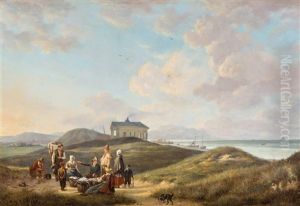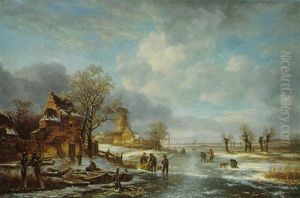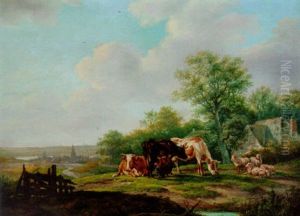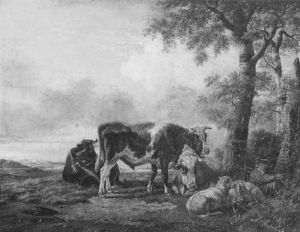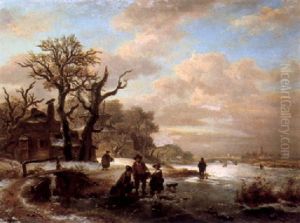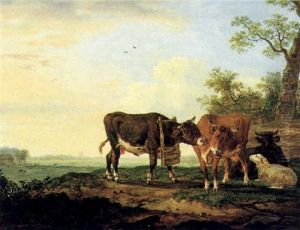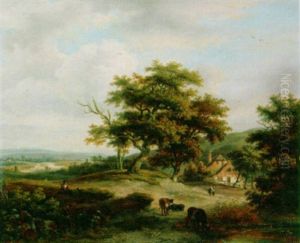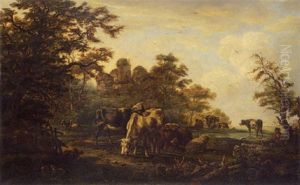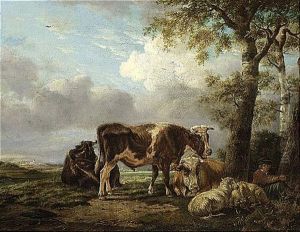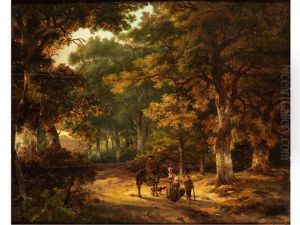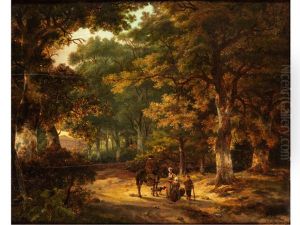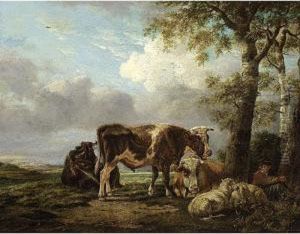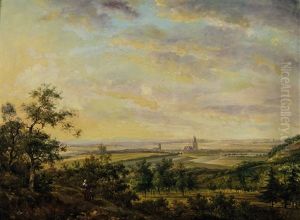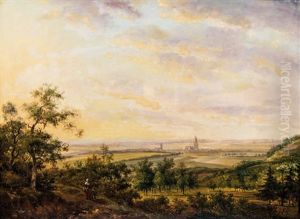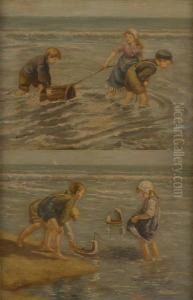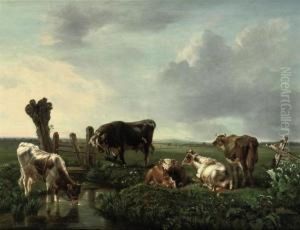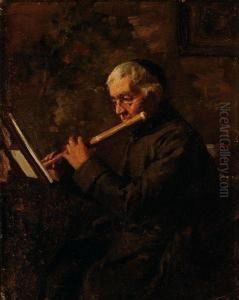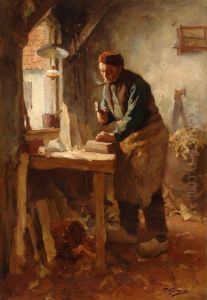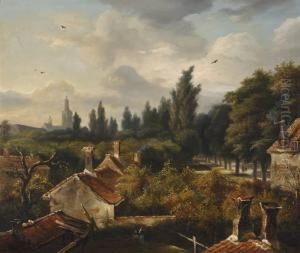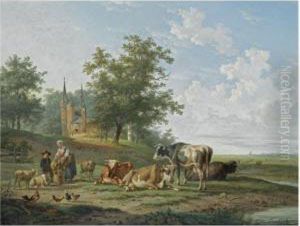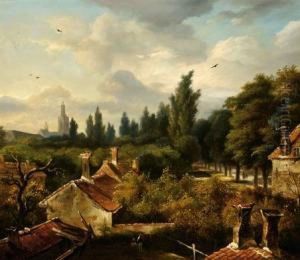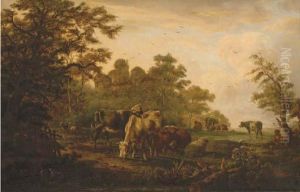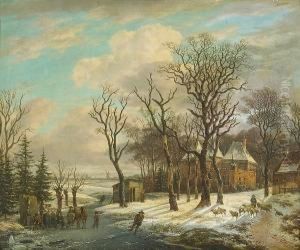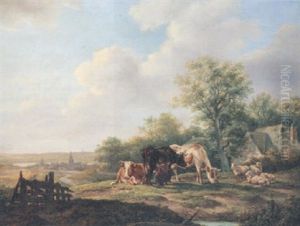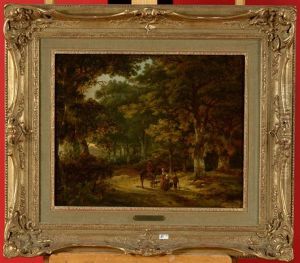Anthony Jacobus Offermans Paintings
Anthony Jacobus Offermans was a Dutch artist known for his work as a painter during the 19th century. Born on November 28, 1803, in The Hague, Netherlands, Offermans came from a family with artistic inclinations. His father, Johannes Offermans, was also a painter, which provided a creatively nourishing environment for the young Anthony.
Offermans's artistic journey began with his education at the Drawing Academy in The Hague, where he was instructed by renowned teachers and artists of the time. His early works were primarily in the genre of landscape painting, which was popular among Dutch artists of that era. Offermans's landscapes often depicted the Dutch countryside, characterized by meticulous attention to detail and a serene, harmonious composition.
As he matured as an artist, Offermans expanded his repertoire to include genre scenes and historical paintings. His genre scenes were particularly appreciated for their vivid portrayal of everyday life and the customs of the Dutch people. These works often featured intricate details and a sense of narrative that engaged viewers.
Offermans's historical paintings reflected a different aspect of his talent, showcasing his ability to recreate scenes from the past with accuracy and dramatic effect. These works contributed to the romantic revival of interest in history and legend that was prevalent in European art during the mid-19th century.
Despite his skill and contributions to Dutch art, Offermans did not achieve widespread fame during his lifetime. Nevertheless, his paintings were exhibited at various art shows and received recognition from his peers and art enthusiasts.
Anthony Jacobus Offermans passed away on December 29, 1864, in his hometown of The Hague. While he may not be as widely known as some of his contemporaries, his work remains a testament to the rich tradition of Dutch painting and continues to be appreciated by art historians and collectors for its beauty and historical value.
